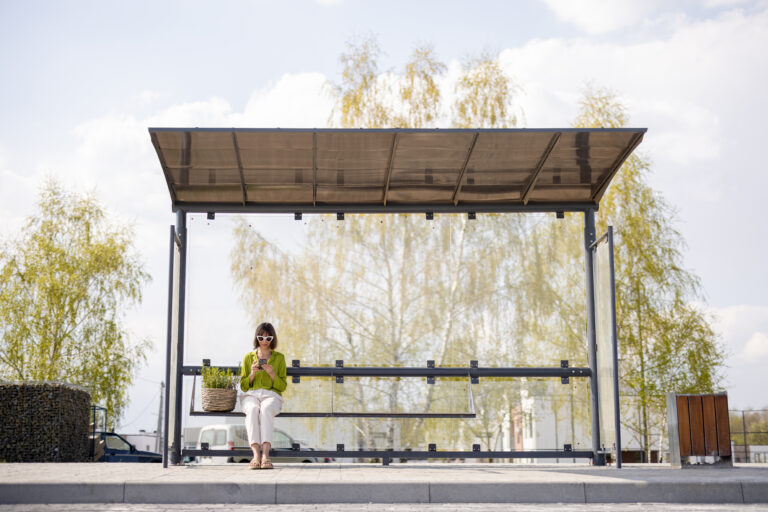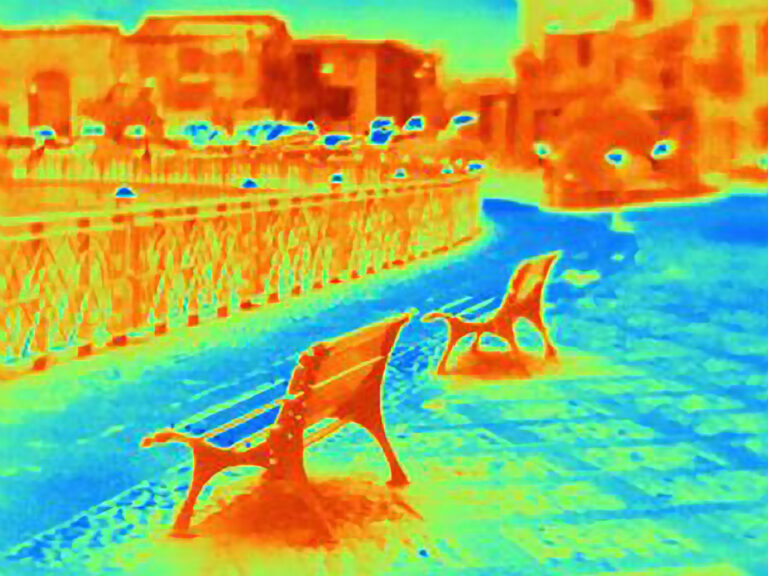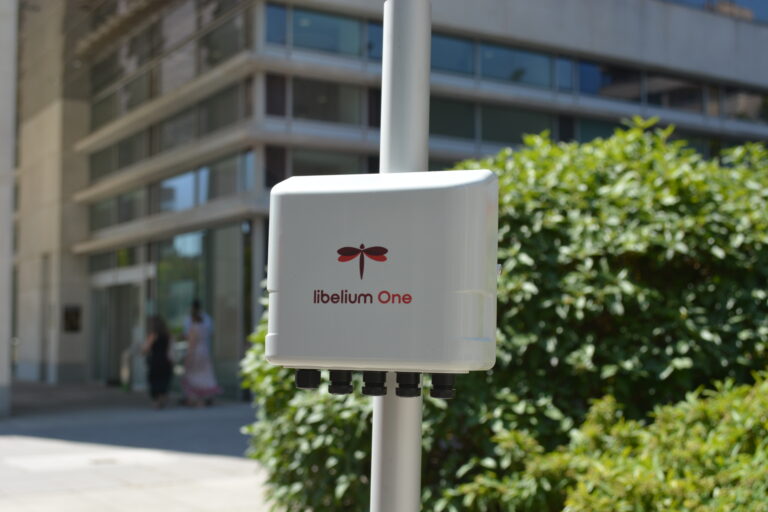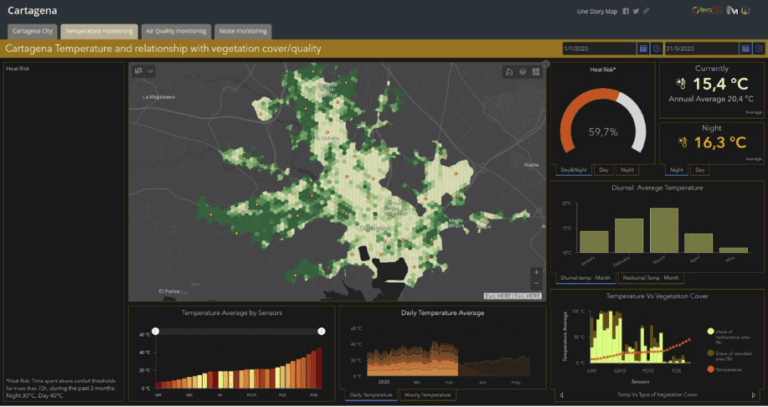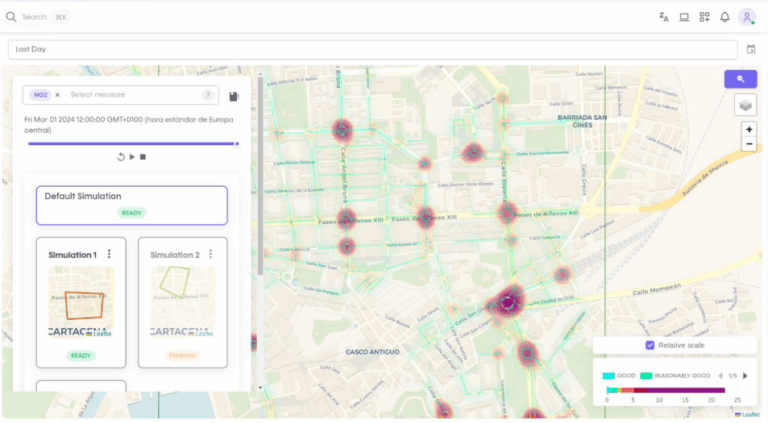Three Tech-Driven Approaches to Beat Urban Heat Islands
Table of Contents

The city never really stops. But it’s slowing down. People go to work, finding shelter under trees as they wait for the bus, or diving into the metro like it’s a fallout shelter. Delivery drivers rush to finish their routes before the midday heat hits. Neighbours exchange glances under the sun. A bead of sweat slides down a temple. “Feels hotter today,” they say in the elevator, at the corner store, at red lights. Tourists wave whatever they can for relief, their ice cream melting before the second bite.
Welcome to a heat island.
The Real Impact of Urban Heat Islands
Urban heat islands are becoming an all-too-common feature in our cities. They’re caused by the mix of summer heat amplified by asphalt, concrete buildings, and vehicle engines. The greenery left in cities struggles to do its job, as high temperatures increase evapotranspiration and limit the natural cooling effects of vegetation. The result? Higher solar radiation and hotter temperatures, day and night.
This doesn’t just affect comfort. Air conditioning becomes the only escape for many, leading to more energy use and more emissions. It’s a vicious cycle.
Cities become sluggish and inefficient. According to Allianz Trade, a day over 32°C can be as economically damaging as a half-day labour strike. In Spain, working conditions have been regulated, and outdoor work is no longer permitted during the central hours of the day. Heat islands deteriorate the environmental and social quality of cities.
But the most devastating numbers are human: over 4,000 heat-related deaths in Spain during the summer of 2023, and more than 60,000 across Europe, according to the European Environment Agency.
Fresh approaches to cool down cities and reduce heat island effects
Can technology help address this issue without creating new problems?
Yes, though maybe not how you’d expect.
Efficient green space management with IoT
Green areas not only offer visual respite, prescribed by doctors, and a recreational space for citizens, but also help mitigate the heat island effect.Trees and plants absorb CO₂ and release oxygen through the process of photosynthesis, acting as carbon sinks and natural coolants. However, maintaining them is expensive, and cities often remove trees due to fear or cost.
Wouldn’t it be great to know exactly when a tree or park needs watering, without wasting water?
Cities can no longer afford routine watering schedules or cutting trees out of caution. Every drop of water matters. Every square meter of green is a sponge fighting the heat. Managing a city park is like conducting an orchestra: you need to know when and where to intervene.
Libelium One is an all-in-one IoT solution for smarter management of water and soil, giving real-time insights into irrigation quality, plant health, and more. With it, public managers can reduce costs while expanding and preserving their green infrastructure.
It’s not about watering more. It’s about watering smarter. Not about planting more. But caring better for what we have.
Data Spaces for Smarter Urban Planning
The shade of a tree is not improvised. Today, in the face of the climate crisis, data helps us accelerate change and do it with greater purpose.
Libelium is leading the European project Beat The Heat, a shared data space designed to help mitigate urban heat islands. It brings together diverse sources: weather forecasts, satellite data, IoT sensors, urban maps, and even tree inventories, into one collaborative ecosystem.For decades, city data has been like water in a dam-stored, siloed, and wasted. We knew a lot. We shared little. And so data became forgotten Excel files. Lost opportunities.
Today, data is no longer stored away: it’s shared, cross-referenced, and reused.
Beat The Heat doesn’t generate new data. It unlocks it. Interprets it. It connects invisible layers of the city —climate, shadow, humidity, pavement, and public health —to reveal solutions we simply couldn’t see before.
What can come from this shared data space?
- Plant green areas where they’re most needed.
- Design shade maps showing cooler pedestrian routes on 42°C days.
- Trigger alerts for vulnerable populations during heatwaves.
- Redesign public spaces for thermal comfort.
Or even create solutions we haven’t yet dreamed up.
Cutting CO₂ with Digital Twins
Let’s take it a step further, with digital twins.
A digital twin is a virtual replica of a real-world environment. It can simulate anything from a building to a city’s air quality.
In Cartagena, the City Council partnered with Libelium and used envair360 to create a digital twin of their Low Emission Zone (ZBE). Because ZBEs are often controversial, they wanted to be sure that data backed every decision. The digital twin included pollutant mapping, wind direction and speed, temperature, humidity, and other environmental factors, helping to simulate future scenarios and plan accordingly.
The data was combined with algorithmic modelling to allow decision-makers to “play” by simulating urban pollution scenarios and anticipating critical episodes.
With the insights in hand, the city knew which measures were most effective and had the data to support those decisions.
Now, Cartagena is applying for funding to design a new “superblock”, once again using data to reduce both pollution and urban heat islands.
Tech: Hero or Villain?
No technology is magic without political will. The data is there. The tools are too. And with shared data spaces, they’re easier to build than ever.
What we need are bold decisions.
Public administrations that embrace datocracy, making decisions led by data, don’t just improve operations: they reinvent governance. They anticipate rather than react. They transform instead of patching things up.
When data becomes the compass, everything becomes possible: from protecting citizens against heat-related health risks to revitalizing local economies with impactful decisions. Because when innovation is grounded in data, it’s not just a promise. It’s an everyday practice.
Behind the Change.
Beyond the Challenge.
